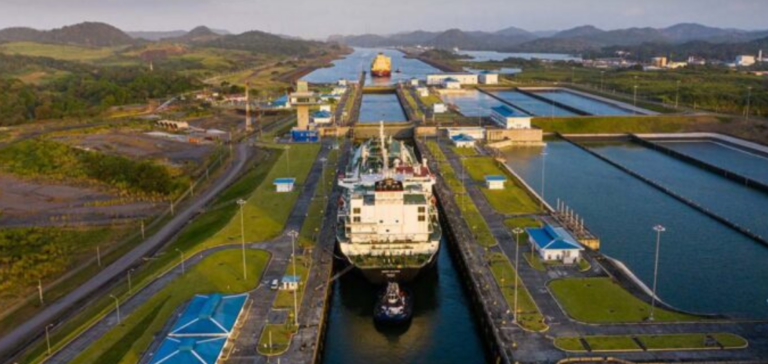Japanese liquefied natural gas (LNG) carriers face a logistical dilemma due to impending restrictions at the Panama Canal. These restrictions, caused by the worst drought in seven decades, are leading to a significant reduction in booking slots for the Neopanamax locks, used in particular by LNG carriers. This situation is prompting industry players to seriously consider alternatives for the routing of their winter cargoes.
Alternative Options for Japanese LNG Transportation
From December 1, the number of available slots will be reduced from seven to six, then to five from January 1, 2024. These cuts have a direct impact on LNG transport operations, a vital resource for the Japanese economy and industry. In 2021, delays in the departure of cargo ships from the Panama Canal had already seriously affected Japan’s LNG supply, exacerbated by severe cold snaps.
Economic and Logistical Consequences of Canal Restrictions
Japanese carriers, who only receive 8% of their total LNG imports from the USA, must now evaluate options such as routes through the Suez Canal or the Cape of Good Hope. These alternative routes have significant disadvantages in terms of time and cost. The journey via the Suez Canal takes just over a month to reach Japan, while that via the Cape of Good Hope takes around 40 days, compared with just over 20 days via the Panama Canal.
LNG Cargo Optimization and Exchange Strategies
Options also include the exchange of LNG cargoes between the Pacific and Atlantic oceans. These exchanges could optimize transport and mitigate the impact of canal restrictions. Hiroshi Hashimoto, from Japan’s Institute of Energy Economics and Security, underlines the growing importance of these optimization strategies in response to prolonged low water levels.
Despite a relatively mild weather forecast for the winter of 2023-24, an unforeseen change in weather conditions could disrupt timely LNG supplies, particularly from the USA. This could not only affect preparations for next winter, but also call into question the viability of the Panama Canal as a base route for annual LNG delivery schedules from 2024 onwards.
The current crisis at the Panama Canal represents a turning point for Japanese LNG shipping, forcing carriers to reconsider their logistics strategies. While new routes and cargo swaps are emerging as potential solutions, the long-term impact on Japan’s LNG supply and associated costs remains a major concern for the industry.






















